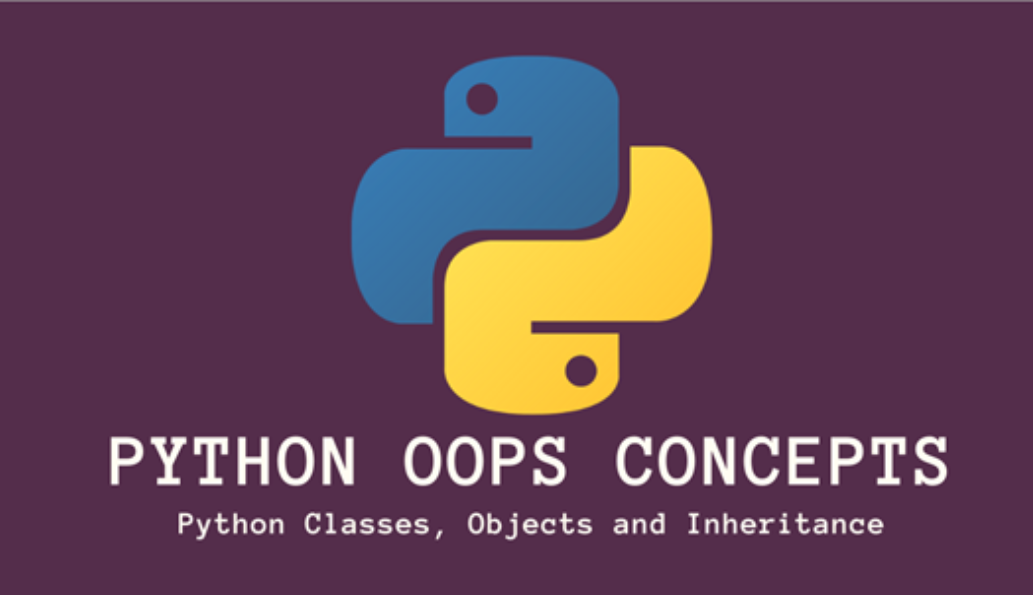The Object Oriented Programming (OOP) is a technique in the programming which organises multiples lines of code into reusable objects to interact among themselves to give the best solution for problems. In this article, we will see some of the python OOPs examples and solutions.

1. Create a class and object
class student:
marks = 89
name = 'Sarah'
stu1 = student()
print(stu1.marks)
print(stu1.name)
89
Sarah2. Create empty class
Now we will create an empty class with no data methods and attributes.
class student:
pass
s1 = student()
print(s1)
s1.name='Sarah'
print(s1.name)
<__main__.student object at 0x000002280EC12D88>
Sarah3. Create class using type keyword
Through type keyword you can create a class and then instantiate it.
s1 = type('student',(),{})()
print(s1)
s1.name = 'sarah'
print(s1.name )
<__main__.student object at 0x000002280EB4FF08>
sarah4. Create and Call methods of a class
The methods present in class are defined as the function which belongs to class.
class student:
marks = 98
name = 'sarah'
def avg(self):
print(self.marks/100*100)
stu1 = student()
print(stu1.marks)
print(stu1.name)
stu1.avg
98
sarah
<bound method student.avg of <__main__.student object at 0x000002280EC1FE08>>5. Using __init__() method to assign values
The classes in the python have a special method _init_() which will execute when an instance of the memory is created.
class student:
def __init__(self, marks,name):
self.marks = marks
self.name = name
stu1 = student(89,'Sarah')
print(stu1.marks)
print(stu1.name)
89
Sarah6. Update object properties
Let’s see how we can update the properties of an object in python.
class student:
def __init__(self, marks,name):
self.marks = marks
self.name = name
stu1 = student(89,'Sarah')
print(stu1.marks)
stu1.marks = 90
print(stu1.marks)
89
907. Deleting the object and object properties
You can make use of del keyword to delete the properties of object and object itself.
class student:
def __init__(self, marks,name):
self.marks = marks
self.name = name
stu1 = student(89,'Sarah')
del stu1.marks
del stu1
It will delete the mentioned records…
8. Iterate over object attributes
You can use ‘dir’ to get back all the values in that. You can even go through list comprehension to get more methods.
class A():
m = 1
n = 2
def __int__(self, x=1, y=2, z=3):
self.x = x
self._y = y
self.__z__ = z
def xyz(self):
print(x, y, z)
obj = A()
print(dir(obj))
print([a for a in dir(obj) if not a.startswith('__')])
['__class__', '__delattr__', '__dict__', '__dir__', '__doc__', '__eq__', '__format__', '__ge__', '__getattribute__', '__gt__', '__hash__', '__init__', '__init_subclass__', '__int__', '__le__', '__lt__', '__module__', '__ne__', '__new__', '__reduce__', '__reduce_ex__', '__repr__', '__setattr__', '__sizeof__', '__str__', '__subclasshook__', '__weakref__', 'm', 'n', 'xyz']
['m', 'n', 'xyz']9. Create data attributes of a dynamic class
You can use the ‘setattr’ to set the attribute name of the given object in python.
class student:
pass
stu1 = student()
setattr(stu1,'Marks',89)
stu2 = student()
setattr(stu2,'Age',23)
print(stu1.Marks)
print(stu2.Age)
89
2310. Create static value variable
We are declaring a variable inside the class definition.
class student:
age = 23
print(student.age)
s = student()
print(s.age)
s.age = 24
print(student.age)
print(s.age)
23
23
23
24Wrapping Up
The python OOPS examples and solution is provided for the most popular questions. If you are familiar with classes and objects then you will get this easily.
There are tons of examples are there for OOPs in python. Object oriented is bit complex but solves majority of the real-world tech problems.
This article is all about python OOPs examples and solutions. Hope this is useful to you people. Happy learning
More read: OOPs in python
